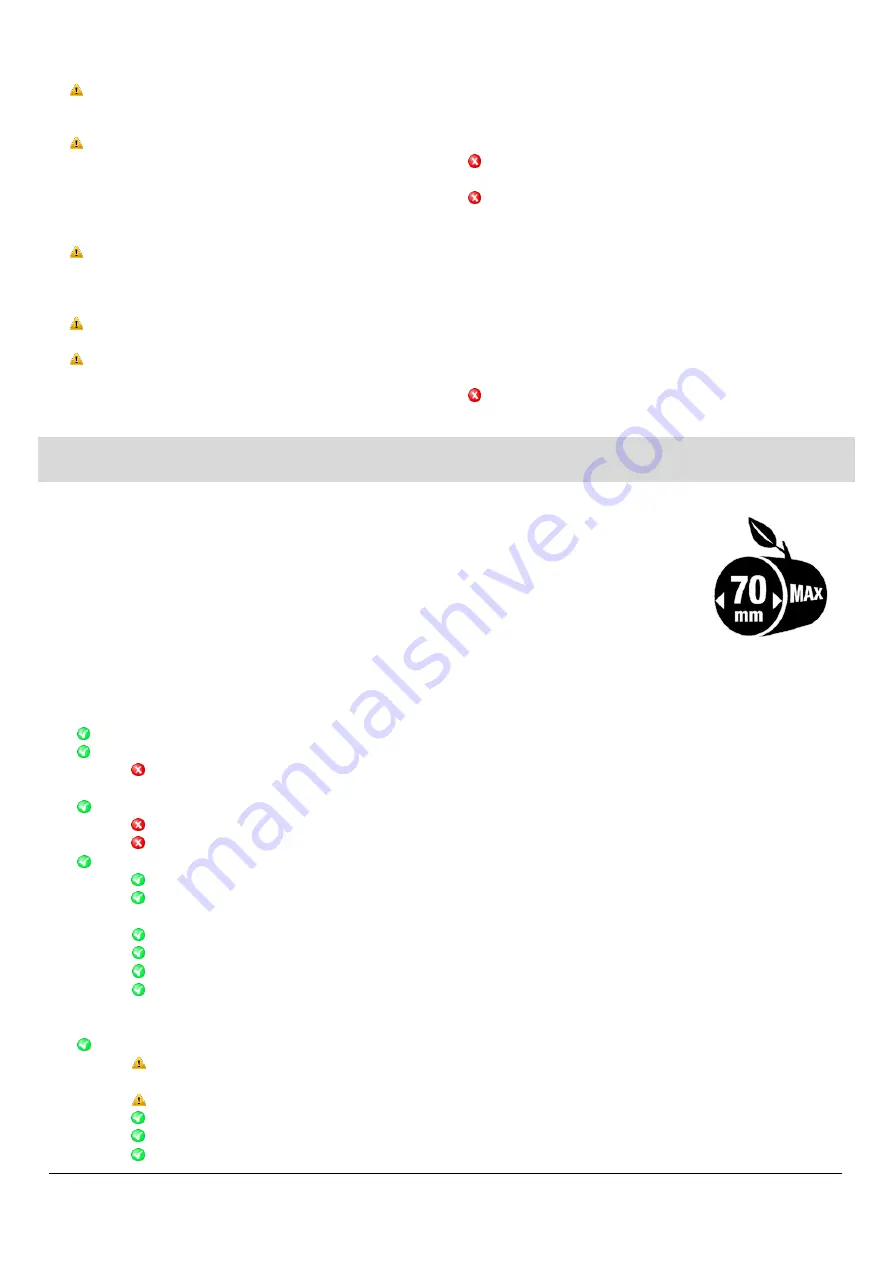
Hansa C7eu O&M Manual - OM-019 revision B 03/09/2018
© Hansa Chippers 2018
7
Sound
Damage to hearing
Always wear hearing protection when operating the
machinery
Discharge material
Eye injury, minor cuts
Always wear safety glasses when operating the machinery
Do NOT
put any body part in front of the outlet
chute
Do NOT
put the machinery in a place where the
outlet chute is directed on a hard surface
Feeding material
Cuts and scrapes
Wear safety gloves
Wear tight fitting long sleeves and pants to cover bare skin
when operating the machinery
Weight of the chipper
Straining, crushing
Place the machinery on level ground
Petrol, oil, grease
Poisoning, skin irritation,
harmful vapours
Take care when handling petrol, oil and grease
Wash skin if contaminated with petrol, oil or grease
Do NOT
refuel the chipper in enclosed areas
Operation
The chipper is self-feeding and has a large inlet opening. It can process:
•
Prunings, stalks, vines, leaves, roots and vegetable matter, paper and cardboard
•
Freshly cut material is better to process than dry material
•
Maximum capacity is 70 mm diameter branches
It is helpful (but not required) to keep a wooden stick handy, approx. 60 mm diameter x 600 mm long for:
•
Pushing in short, brushy and very leafy materials
•
Keeping the inlet chute clear
Safe setup procedure
Before you start:
Ensure the chipper is positioned in an open area and on firm level ground
Ensure that the outlet chute is discharged onto soft ground (e.g. grass)
Do NOT
allow the outlet chute to discharge chip onto hard surfaces (such as a paved or gravel surface)
Ejected material can rebound and cause injury
Keep children, pets and spectators clear of the work area at all times
Do NOT
operate the chipper where there is a hazard to onlookers
Do NOT
allow any person under the age of 18 to operate the chipper
Check:
That all screws, nuts, bolts, and other fasteners are properly secured
That all chipper components are in place and in good condition
If any parts are worn or damaged, contact Hansa for replacements
That fuel and engine oil levels are above the minimum levels
That the fuel cap is secured and there is no fuel leaking from the tank
That the inlet chute and housing are clear of any leftover material
That all labels are in good condition and easily legible
Replace damaged or unreadable labels
View photos of labels in
the ‘Decals’ section
Refuelling:
Take extra care in handling fuels
They are flammable and vapors are explosive
Use only an approved fuel container
Always replace and securely tighten fuel cap after refuelling
Allow engine to cool down before refuelling
If you need to drain the fuel, ensure this is done outdoors










































